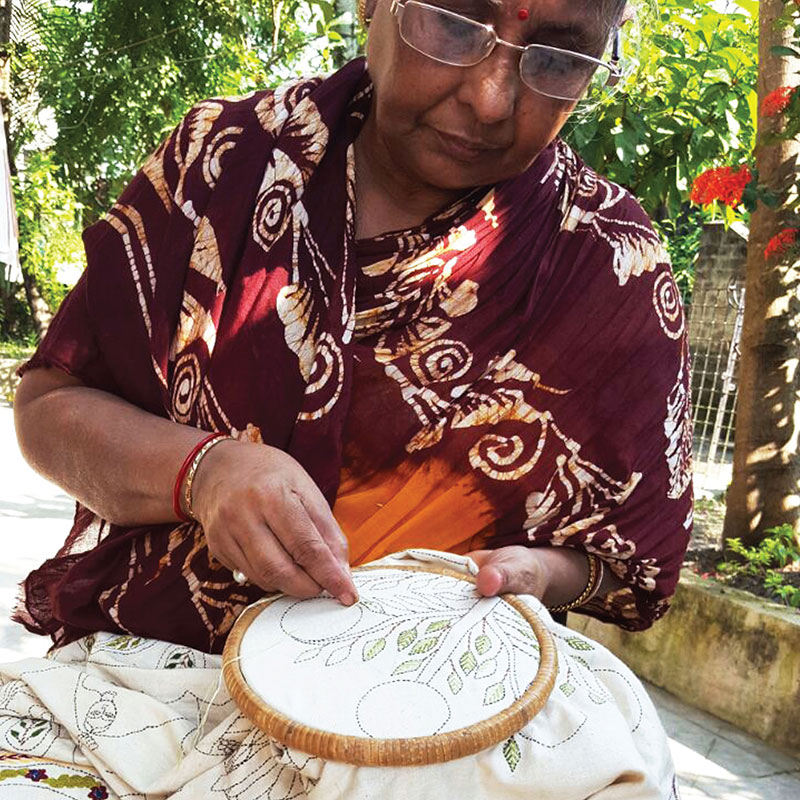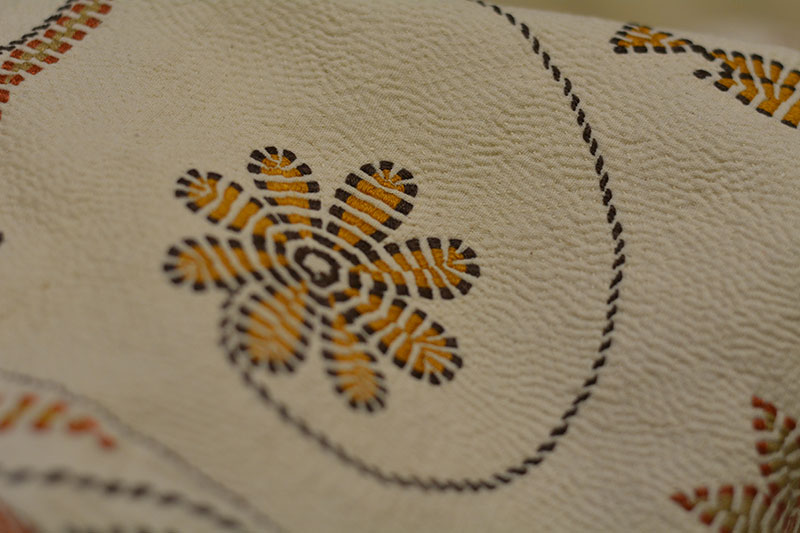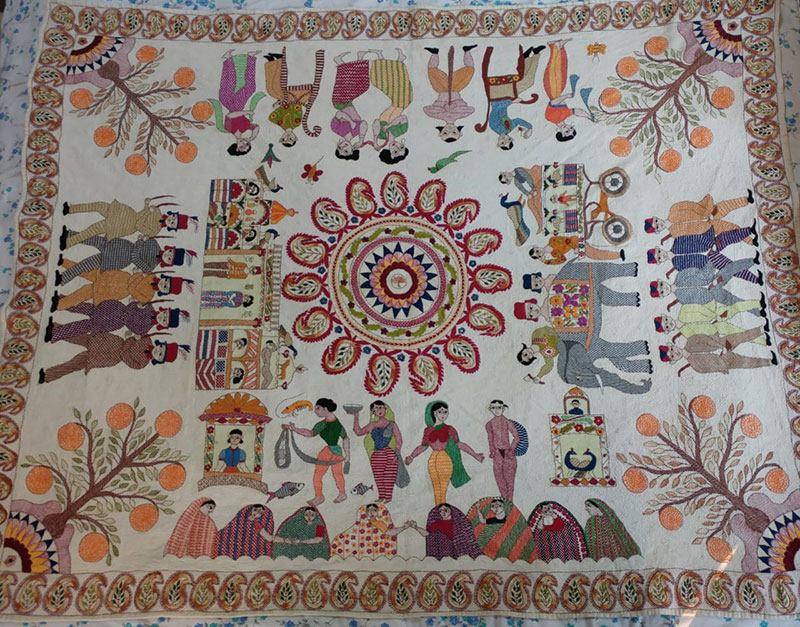Artist:
Mahua Lahiri & Pritikana Goswami
Region:
Country:
Media/General:
Year(s) Attended:
About:
Since the 8th century C.E., India’s Bengal region has produced elaborately conceived and meticulously woven cloth traditionally used to make wraps and covers for protection and comfort. Over time, thrift made its mark in this tradition with women mending much loved and much used fabrics with threads plucked from fraying saris and other fabric – with increasingly elaborate and exuberant motifs. Extending this tradition is Mahua Lahiri, daughter of master artisan Pritikana Goswami, whose dedication to her craft and her people has enabled her to train dozens of women in this artful stitching tradition.
From tea cozies to coin purses, Lahiri’s team of artisans makes a staggering number of products, but no matter what type of item is made, each and every piece is completely done by hand. The tools involved are simple: primarily cloth, thread, and an embroidery hoop. The maximum number of artisans working on a particular art piece might be four, but each member has her own role, from preparing cloth to embroidering final touches on an item.
This specialized type of artwork was predominantly present along the banks of Padma River in eastern India, but suffered a blow during economic and political upheavals that swept through the area during various times in the region’s history. According to Mahua, “The brilliance of the art form is that it was made and practiced across complex social and religious structures in India.” It became a reflection of and a canvas for women’s experiences and feelings, and in this way, the work is a documentation of their thoughts: thus the designs and motifs are ever-evolving.





